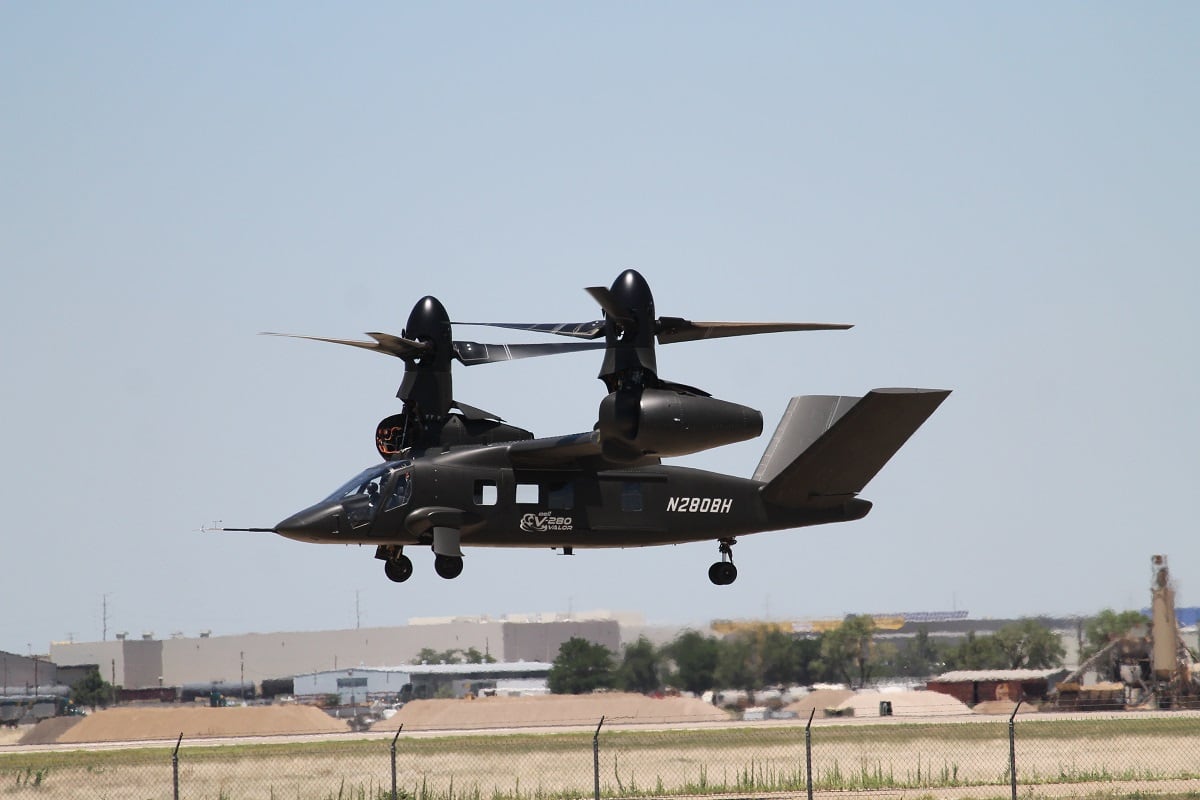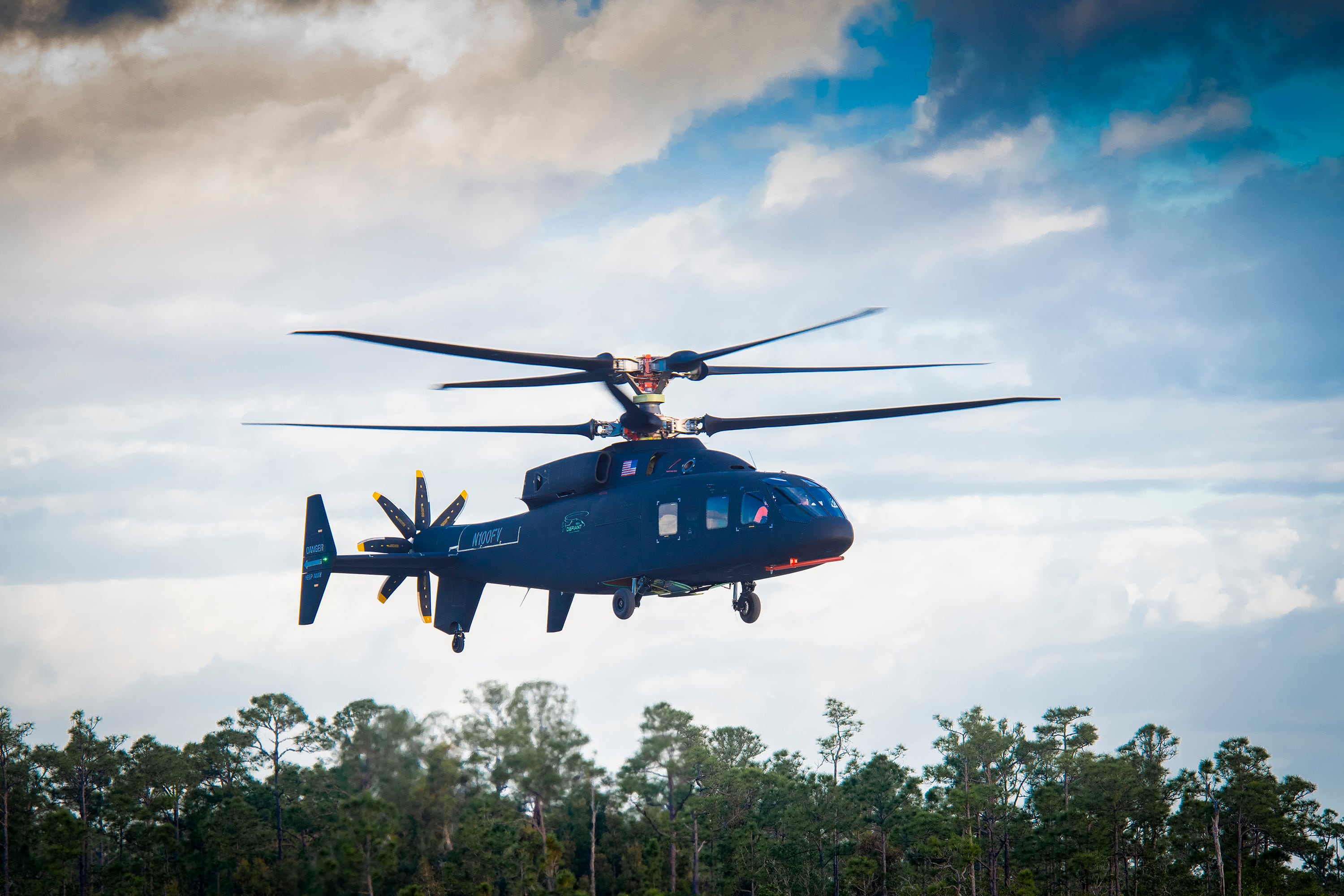WASHINGTON — Bell’s V-280 Valor tiltrotor demonstrator, participating in the U.S. Army’s Joint Multi-Role technology demonstration, has wrapped up low-speed agility maneuver testing — completing the final key performance parameters left to prove out with the system, according to Ryan Ehinger, the company’s V-280 program manager.
Roughly a year-and-a-half since it’s first flight in December 2017, the technology demonstration of the V-280 in Texas has stayed on schedule, ticking of KPPs as the aircraft continued to fly.
“We have met all the KPPs we have set out to meet for JMR,” Ehinger told Defense News in a May 17 interview, and most importantly, proving a tiltrotor can be agile.
RELATED

The low-speed agility tests demonstrated the Valor has raw control power in pitch, roll and yaw maneuvers that meet the Army’s highest performance standard for handling qualities, he said.
“This latest flight milestone proves that the V-280 Valor tiltrotor delivers first-rate handling for pilots during low-speed maneuvers without sacrificing speed, range or payload that the military needs for multi-domain operations,” Ehinger said.
Bell isn’t grounding the aircraft now that it’s finished ticking off all of the Army demonstration requirements and will now continue to work on incorporating new mission systems beyond its first major mission system demonstration of Lockheed Martin’s Pilotage Distributed Aperture System (PDAS) that allows crew and pilots to “see through” the aircraft.
Lockheed Martin is partnered with Bell on the JMR program, but also owns Sikorsky, which is partnered with Bell’s JMR TD competitor Boeing. Sikorsky and Boeing flew its SB-1 Defiant coaxial helicopter for the first time in March this year — a delay from the original first flight deadline due to blade manufacturing challenges.
What Bell’s V-280 and Sikorsky-Boeing’s SB-1 are proving during the demonstration is informing the Army’s path to acquire a Future Long-Range Assault Aircraft.
RELATED

Ehinger said Bell also plans to begin demonstrating some autonomous capabilities by the end of the year. Initially, that autonomous flight will include a take-off and hover and an ability to convert from vertical take-off and landing mode into cruise mode.
Bell is also working on building the V-247, an unmanned tiltrotor for the Marine Corps, and both the V-280 autonomy efforts and the V-247 development will inform each other, Ehringer said.
So far, the V-280 has flown over 300 knots true airspeed in forward flight mode, has logged over 110 hours of flight and 225 hours of rotor-turn, has completed 50-degree banked turns and has climbed 4,500 feet per minute and sustained flight at an altitude of 11,500 feet. It has also flown over 370 miles in a single flight ferry and also most recently completed open-door fast-rope demonstrations.
Jen Judson is an award-winning journalist covering land warfare for Defense News. She has also worked for Politico and Inside Defense. She holds a Master of Science degree in journalism from Boston University and a Bachelor of Arts degree from Kenyon College.







